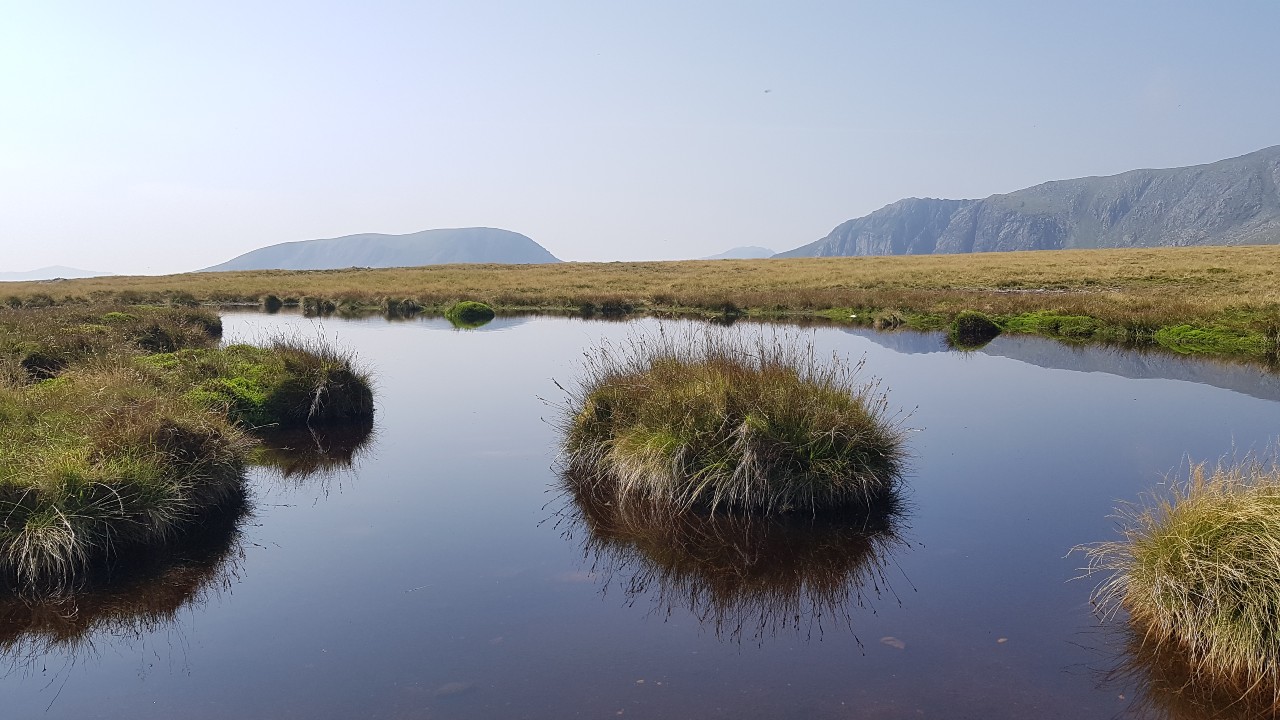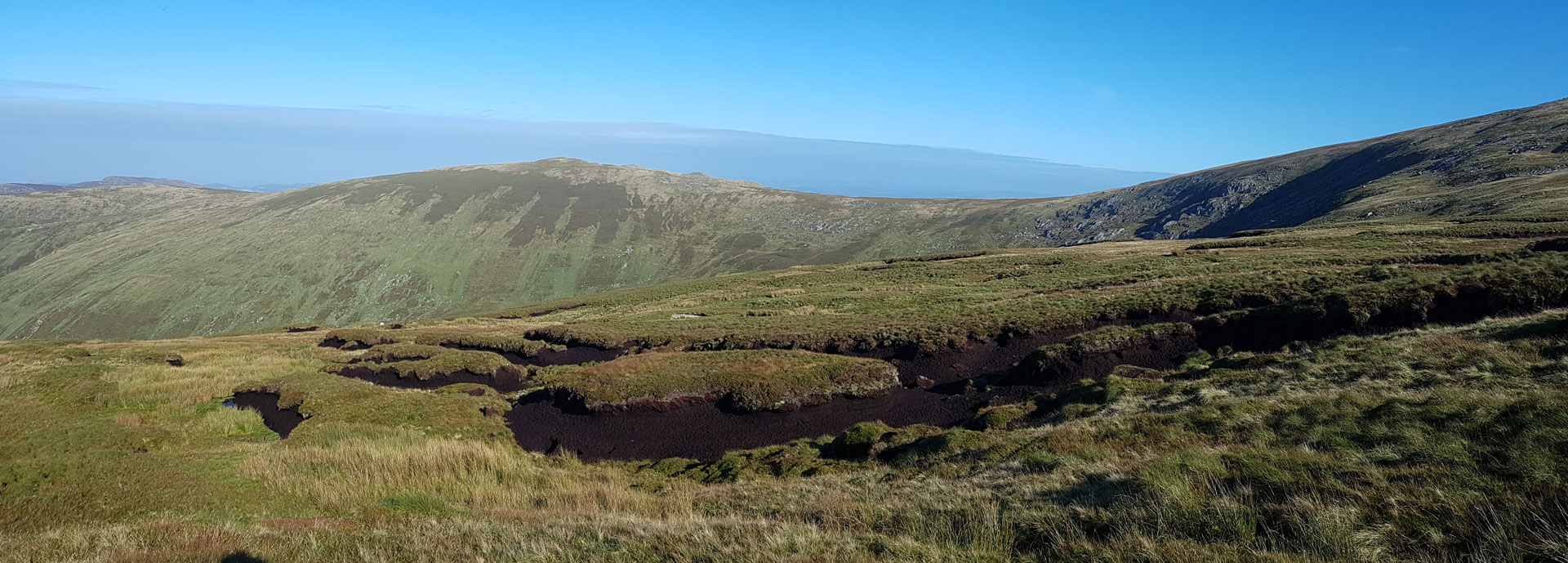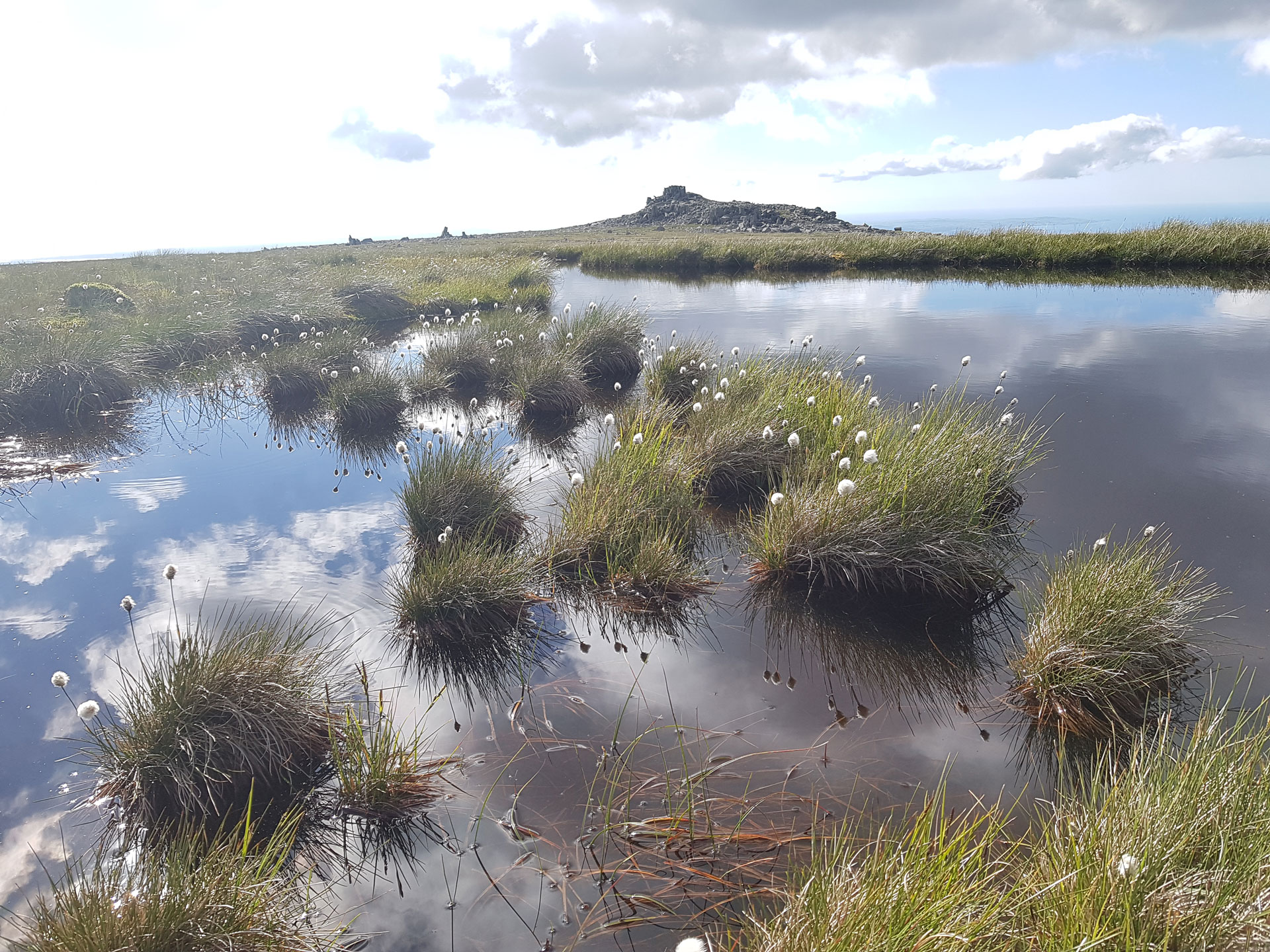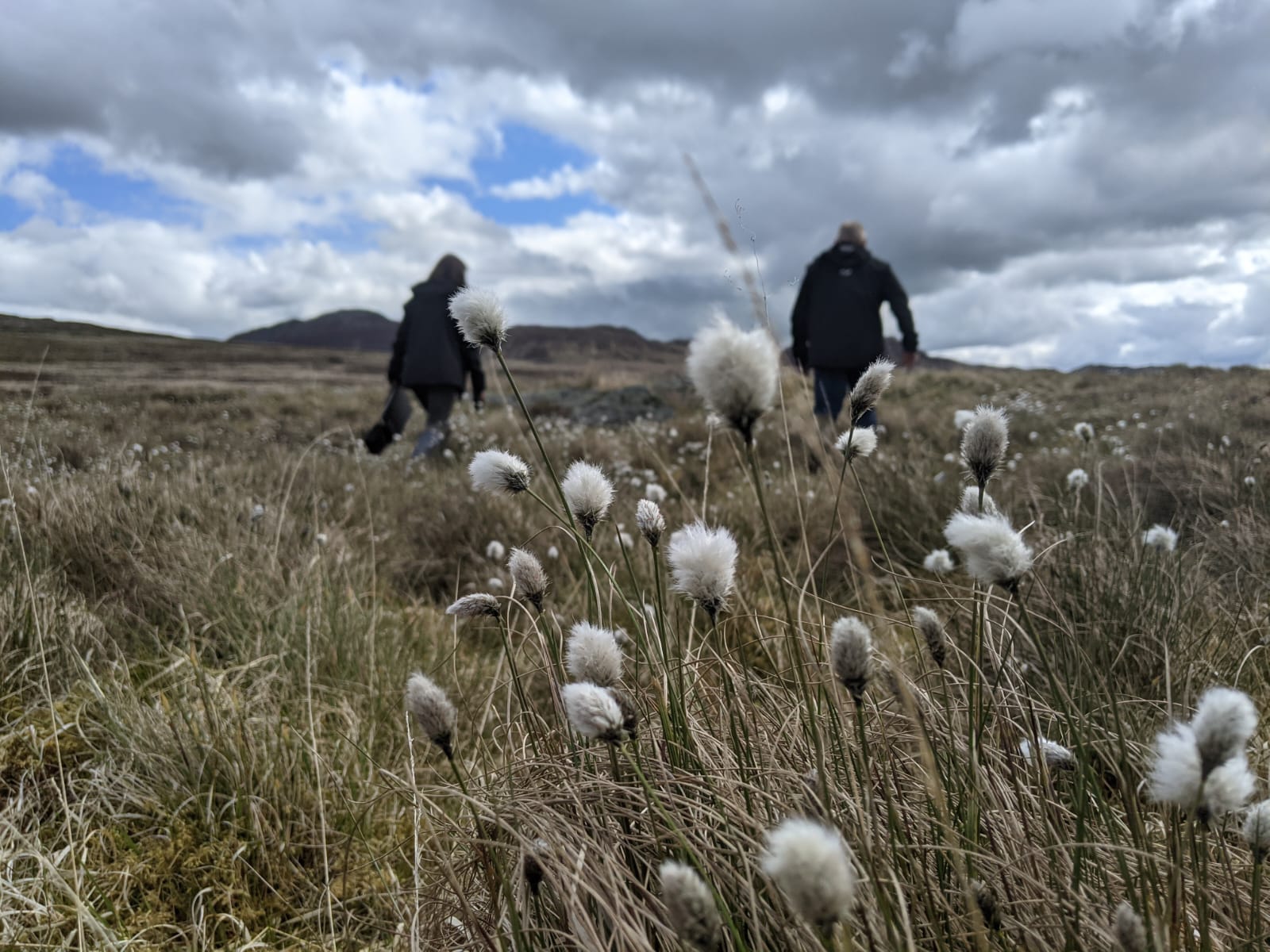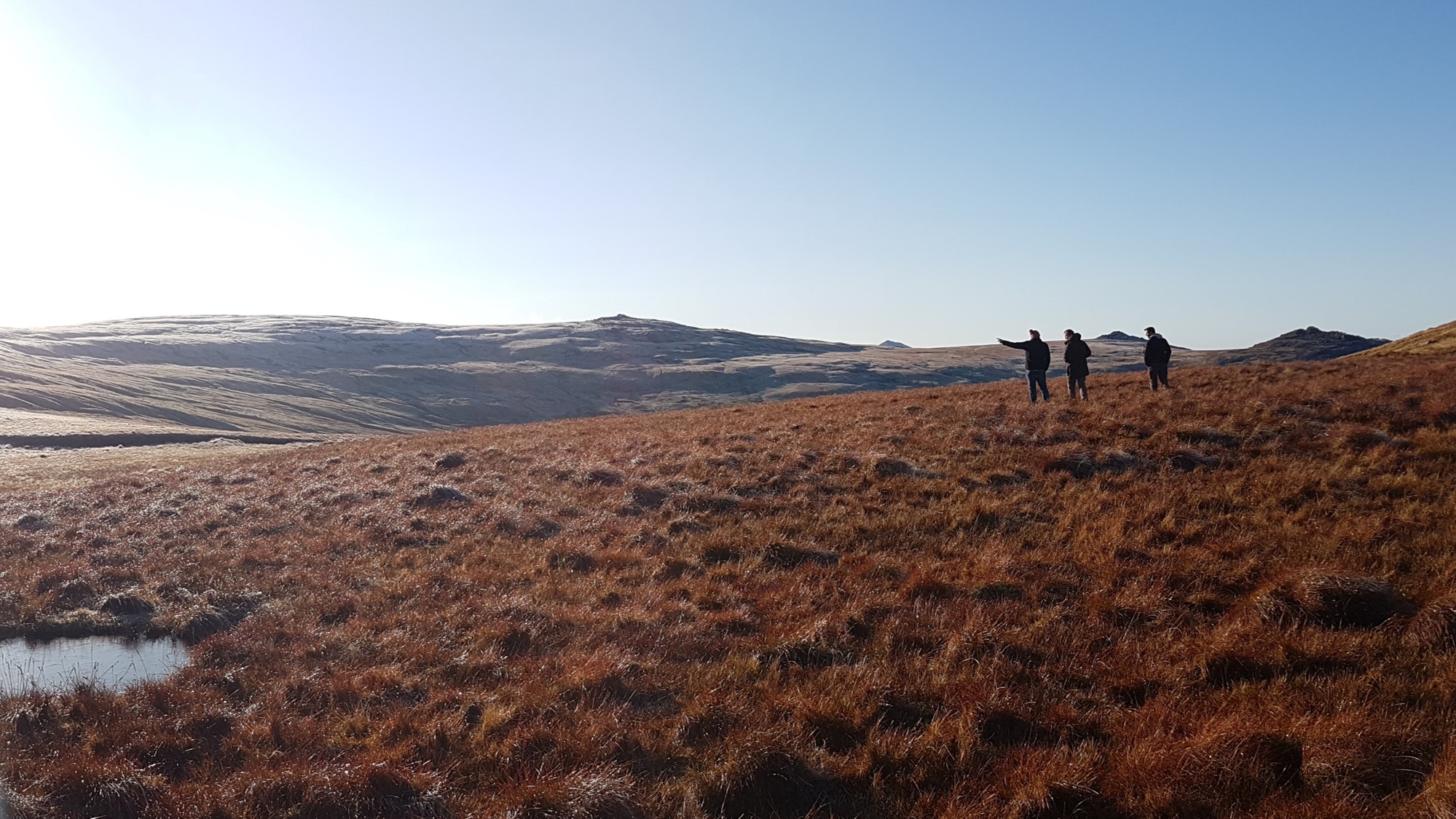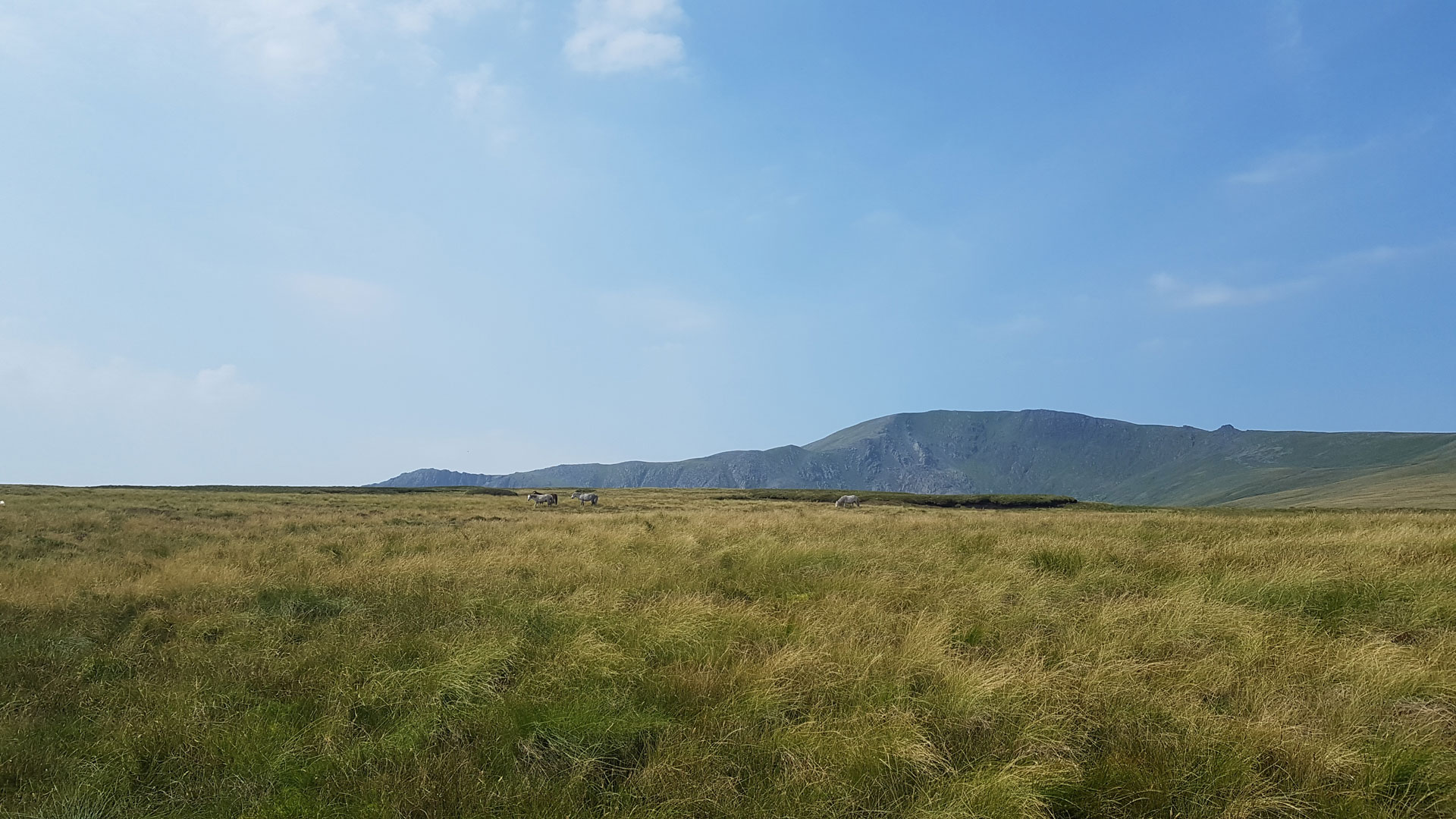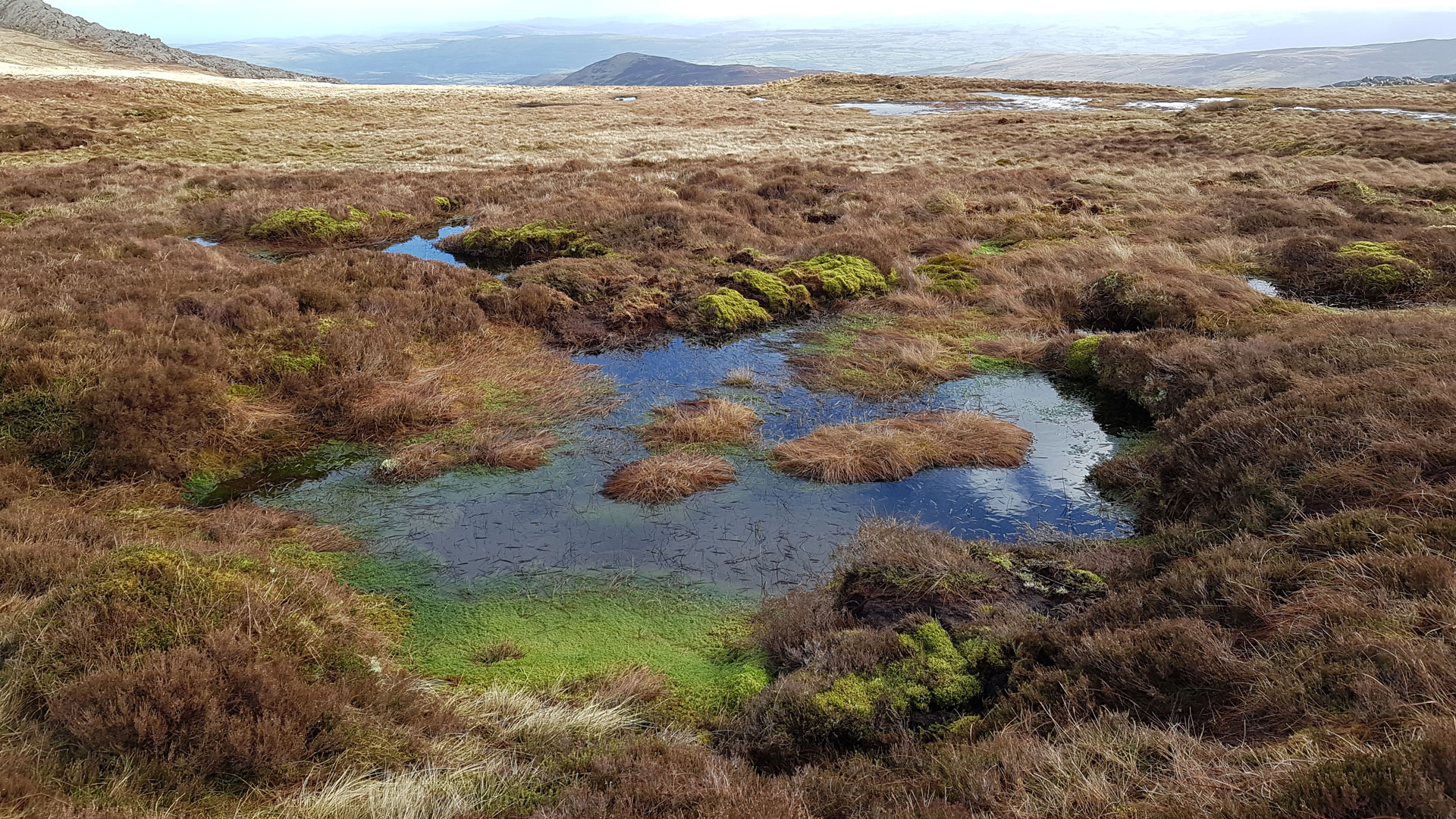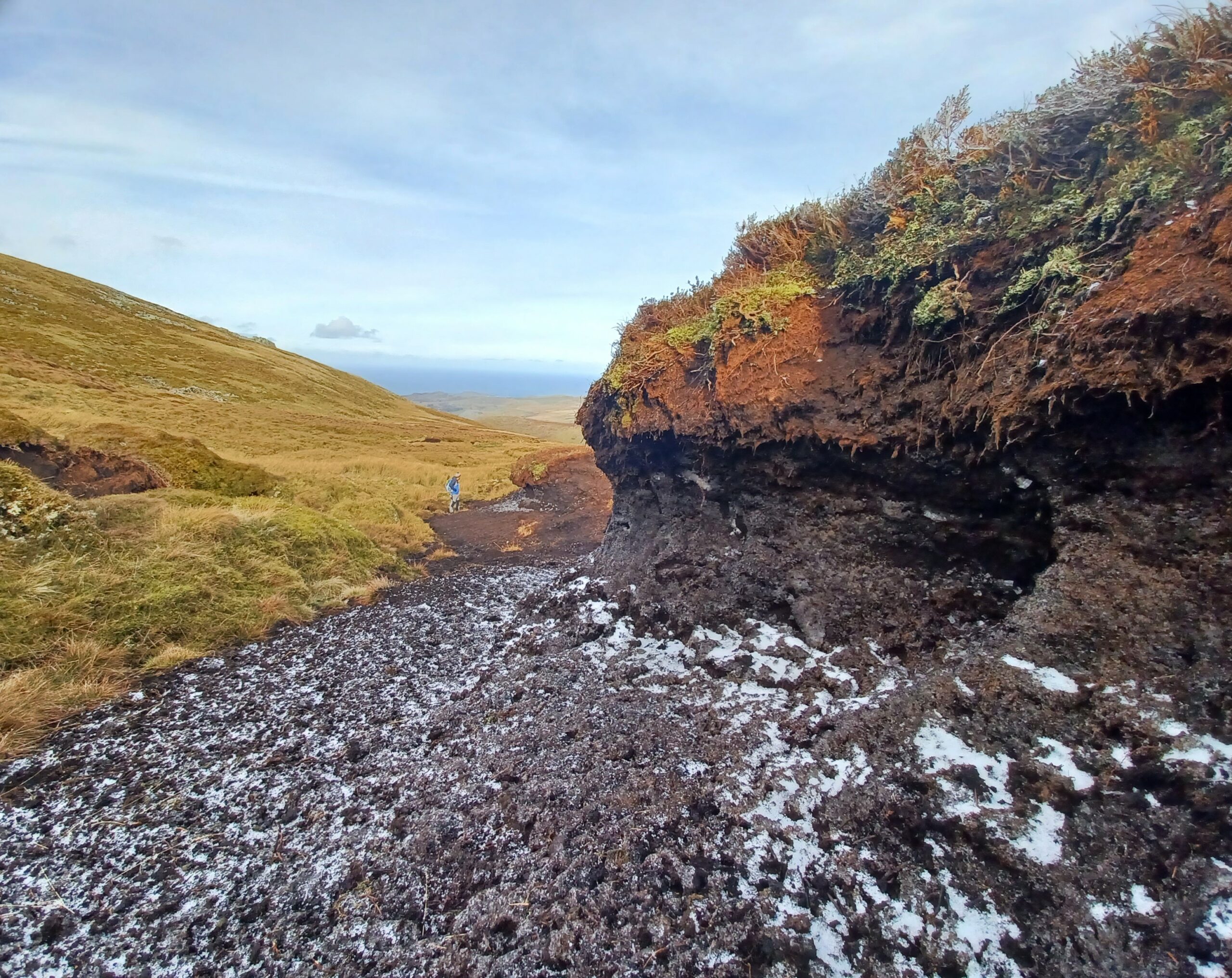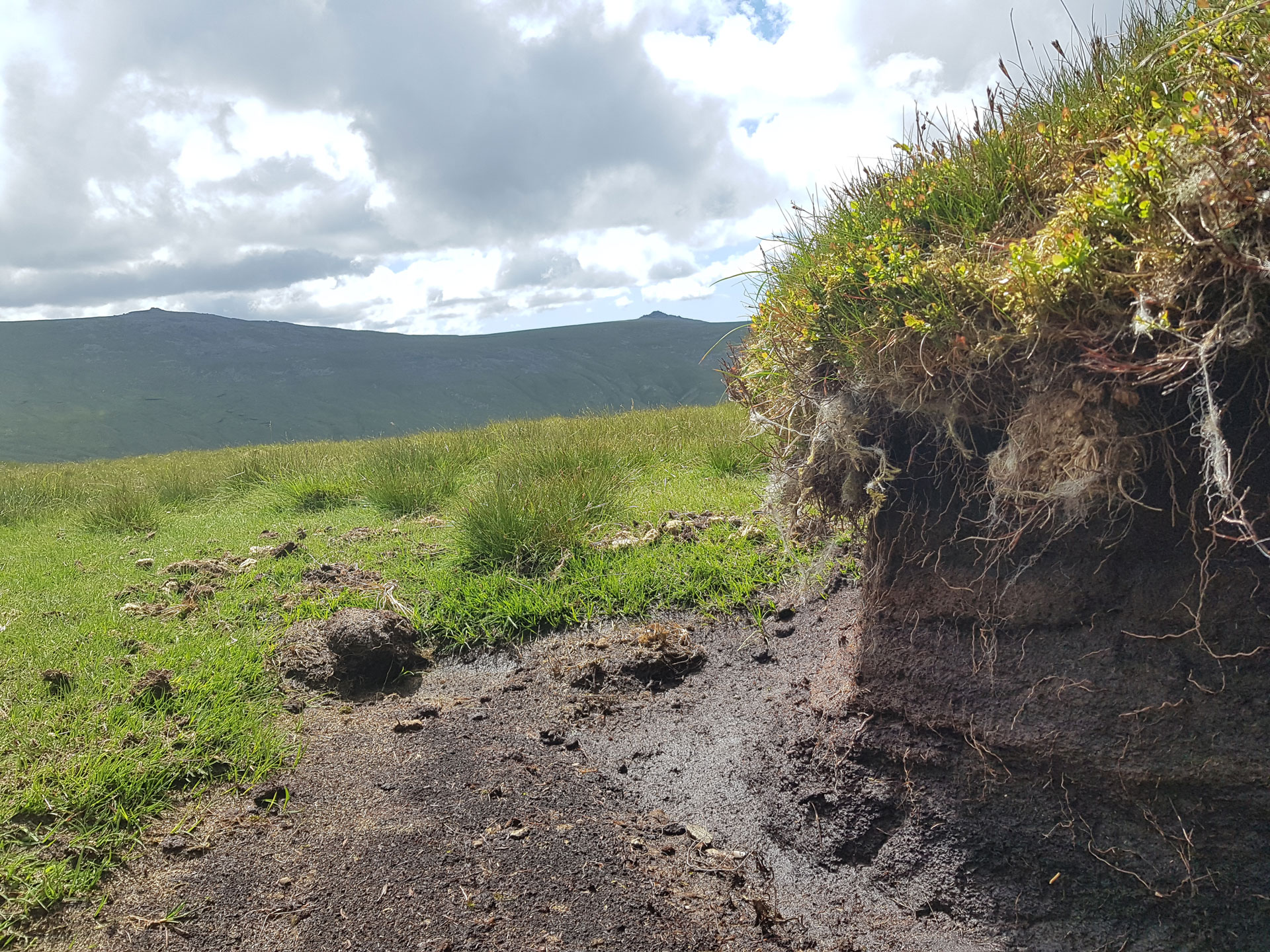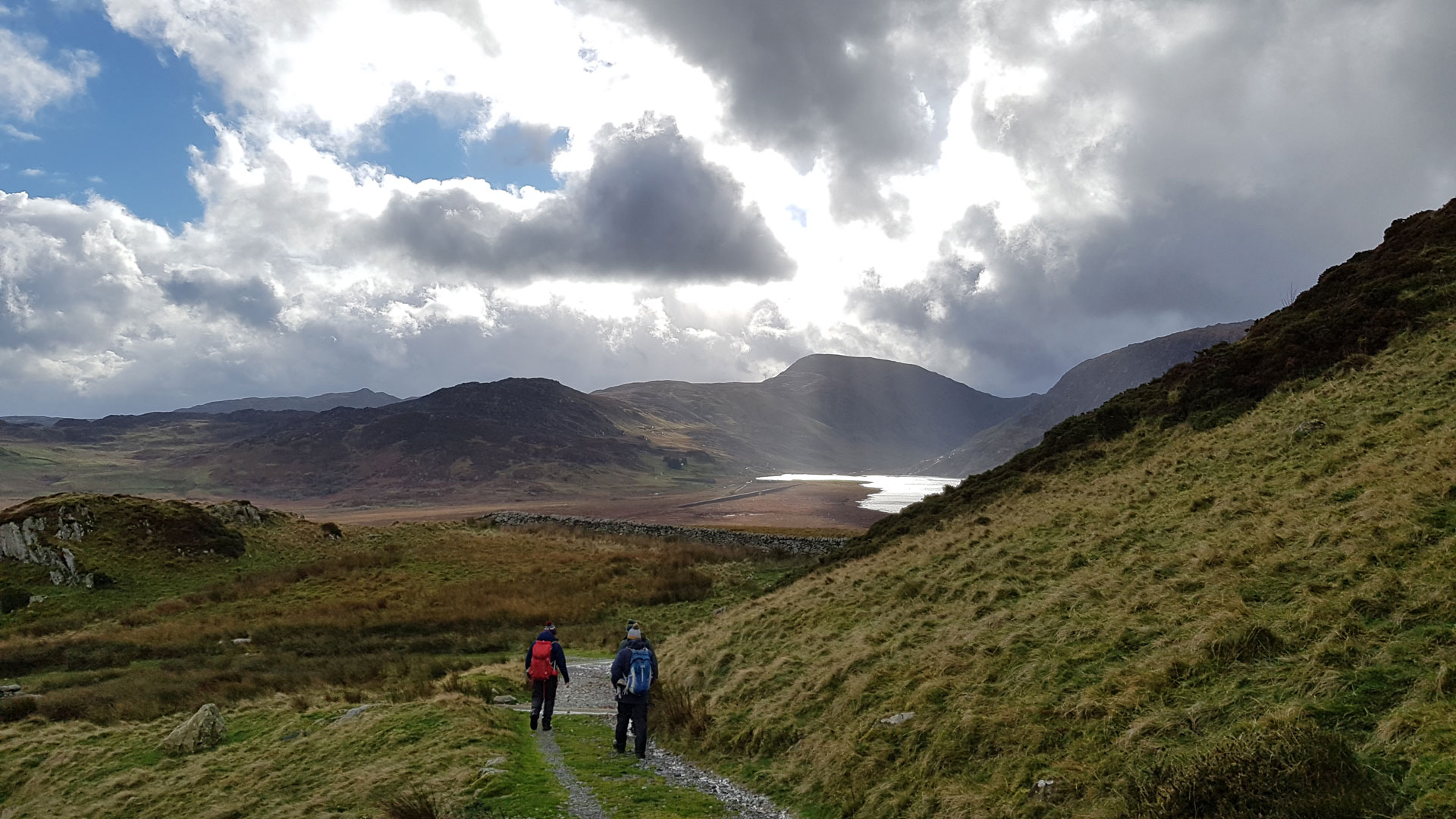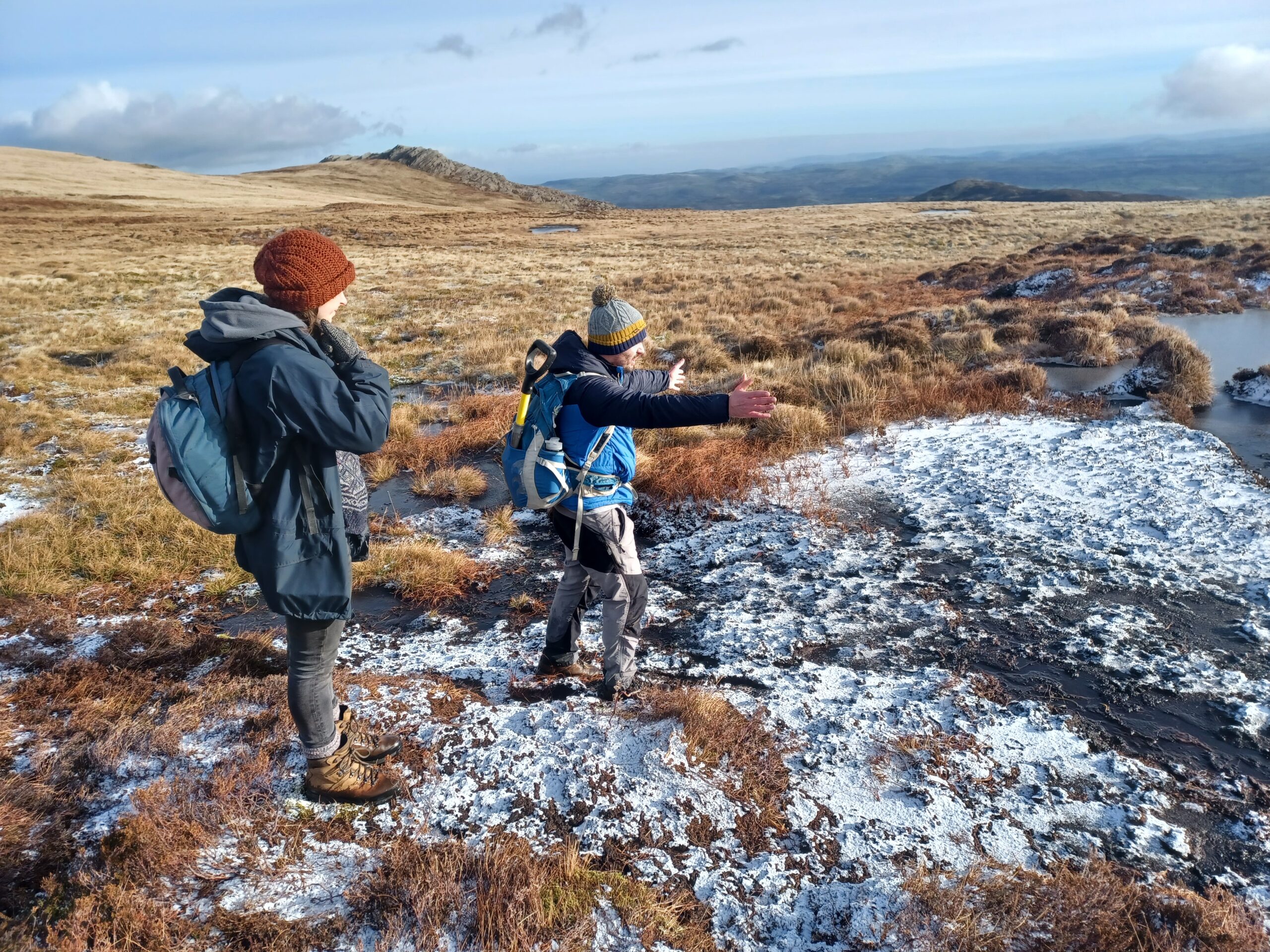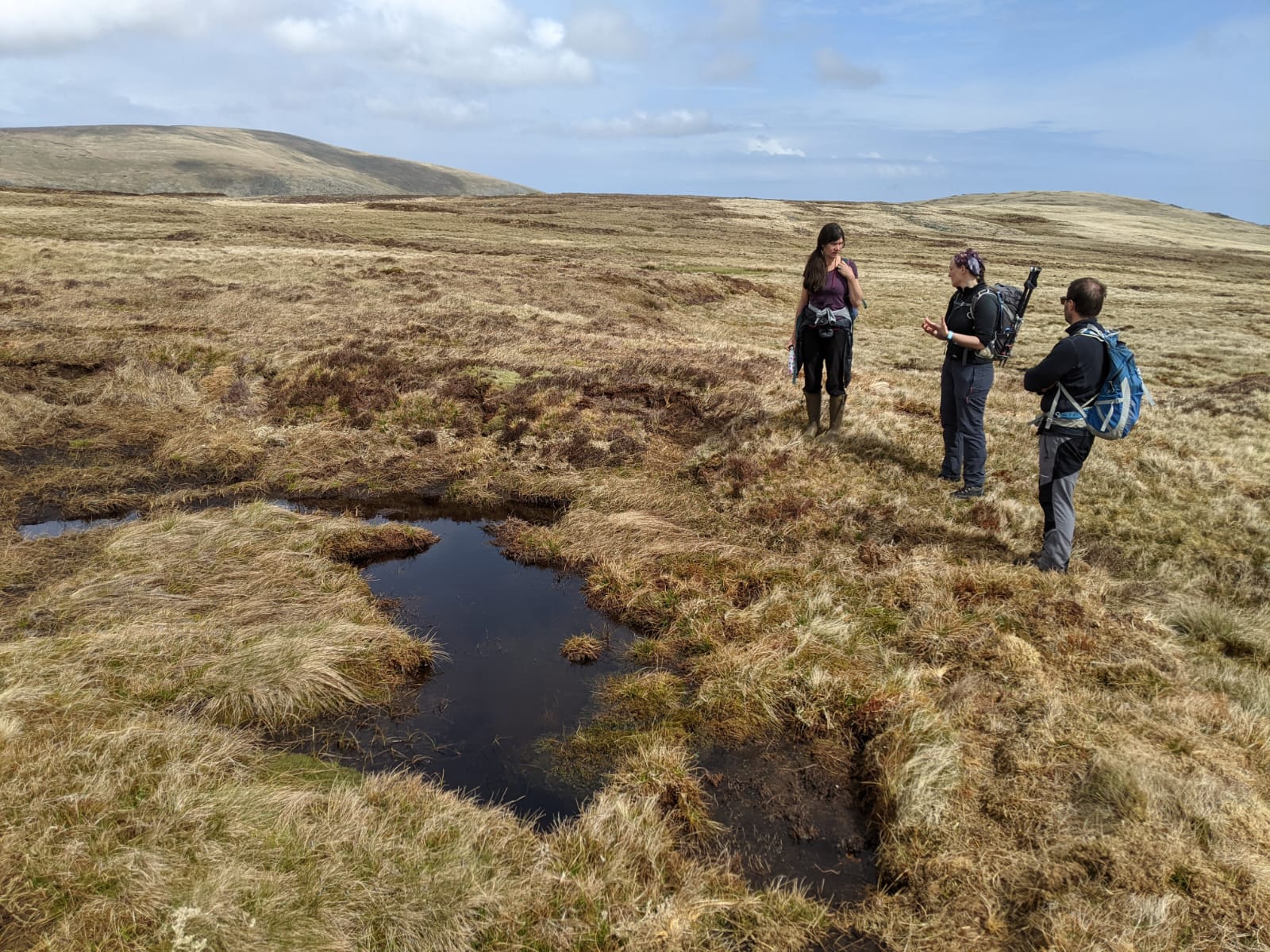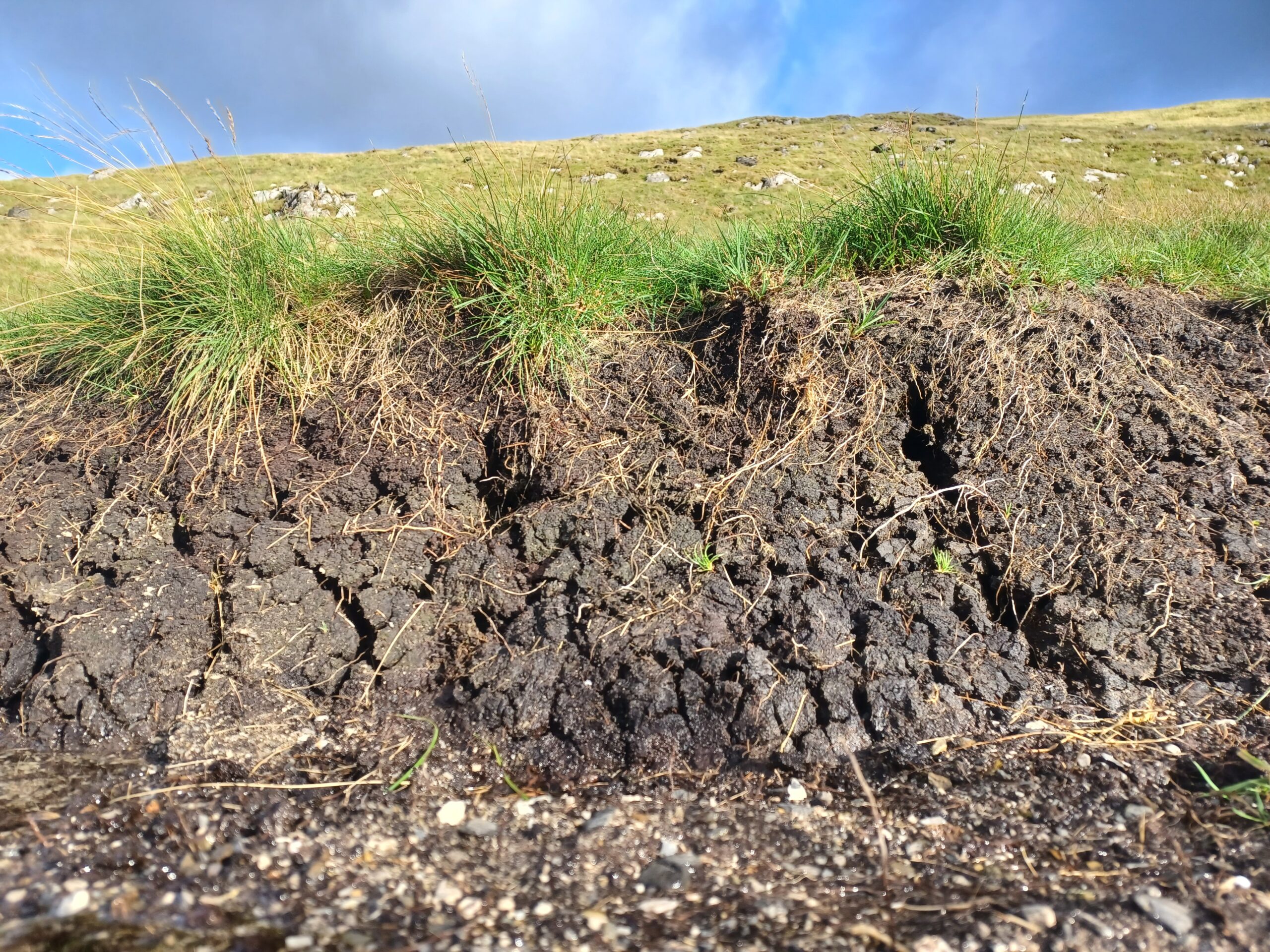Restoring peatlands involves stabilising and re-vegetating areas of eroded peat. Here is a digger on Llwytmor, in the Western Carneddau, repairing a large, badly eroded area by re-profiling the steep-sided banks of exposed peat (or ‘peat haggs’) to a shallower angle, then covering them back over with turf. This helps the habitat to return to a stable state and prevents the peat from drying out and releasing carbon.


